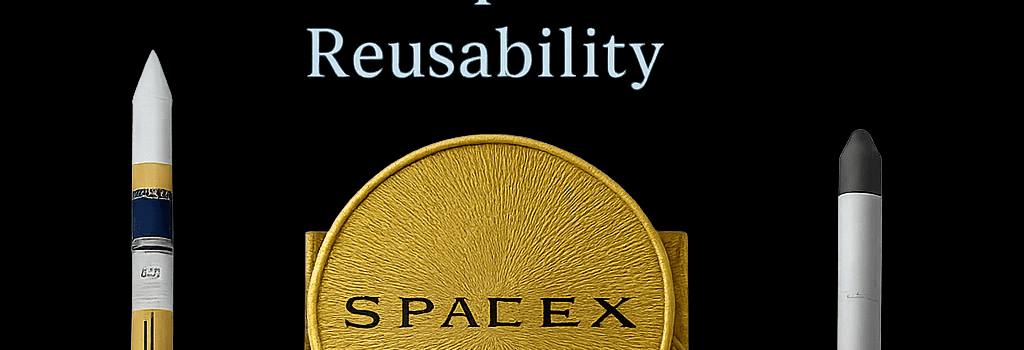Rocket Report: Japan’s H2A Exits; SpaceX Tokens; Europe’s Themis Reusability

Welcome to Edition 8.01 of the Rocket Report—expanded with deeper technical analysis, expert commentary, and the latest developments in the orbital launch market. In the spirit of July 4 fireworks, we salute real rockets transforming access to space.
Orbex Prime Delayed to 2026
At the Paris Air Show, Orbex CEO Miguel Bello Mora confirmed the first orbital flight of the Prime rocket is now targeted for H1 2026. The delay stems from launch infrastructure bottlenecks at SaxaVord and the company’s slow hardware rollout over ten years. Prime is a two-stage, methane/LOX vehicle featuring 3D-printed thermoplastic tanks and a vacuum-optimized main engine producing ~80 kN of thrust.
“We must secure an additional £120 million over four years to finalize manufacturing and site upgrades,” said Bello Mora. Industry consultants warn this funding ask is steep given crowding in the small-sat sector.
Themis Reusable Stage Arrives at Esrange
The 30 m Themis demonstrator—Europe’s first attempt at a reusable main stage—landed on a transporter at Esrange Space Centre (68°N). Over the coming months, ESA and ArianeGroup will conduct wet dress rehearsals, multiple hot-fire ignition tests of the Prometheus engine (100 t sea-level thrust, LOX/LCH4, expander-bleed cycle), and vertical “hop” flights using hydraulically actuated landing legs.
Expert view: Dr. Elena Rossi, ESA propulsion lead, commented, “Twenty ignitions in a single day have validated Prometheus cooling loops and additive-manufactured injectors. We aim for >50 hop tests through 2026.”
Rocket Lab’s Electron: Two Launches in 48 Hours
Between June 28–30, Rocket Lab turned around its 12 m Electron booster in under two days, marking the fastest cadence yet at Mahia Peninsula. Each Rutherford engine (24 per vehicle) uses electric turbopumps and epoxy-infused carbon fiber tanks, allowing rapid refurbishment and reflight.
“Symphony in the Stars was our 10th mission in 2025—100% success,” said Peter Beck. Next up: testing remote helicopter capture for booster recovery, reducing retrieval time from 24 hours to under 4 hours.
Latitude to Scale Zephyr Production
French startup Latitude secured a 270,000 ft² former pharmaceutical site near Reims, investing €50 million to build automated lines capable of producing 50 Zephyr rockets per year. Zephyr is a 14 m, LOX/RP-1 two-stage launcher with 12 kN thrust first-stage engines. First flight is slated for Q3 2026 from Guiana Space Centre, carrying microgravity and defense payloads under CNES and EDF contracts.
Japan Retires H2A After 50 Launches
On July 1, Mitsubishi Heavy Industries and JAXA concluded the 24-year H2A program with GOSAT-GW, a 3,500 kg greenhouse-gas monitoring satellite. The 53 m vehicle delivered 4.5 t to GTO with 49 successes in 50 attempts. H2A’s modular solid strap-on boosters and cryogenic H2/LOX core achieved 430 t of launch thrust.
Next step: The H3 rocket—an expendable 4 m-diameter core offering 600 t thrust with two or four solid boosters—aims to lower costs by 30% per kg. JAXA targets <¥100,000/kg ($690/kg) to GTO, vs. H2A’s ~¥200,000/kg.
SpaceX Tokens Open Private Investment
DealBook reports that platforms like Robinhood and Republic now offer blockchain-based tokens tracking SpaceX’s equity. These tokens are not regulated securities but provide retail investors fractional exposure to SpaceX’s ~$150 billion valuation. They trade on a 2012 SEC exemption for secondary sales to accredited users.
“Tokenization broadens access but risks illiquidity and regulatory arbitrage,” warns FinReg analyst Cara DeWitt. Prospective buyers should evaluate smart-contract custody and counterparty risk.
DoD’s pLEO SATCOM & SpaceX
The White House budget proposes $277 million for MILNET, a proliferated LEO satcom network built on SpaceX’s Starlink architecture. MILNET will supplant the SDA’s legacy data-relay satellites, offering low-latency comms for missile defense and C4ISR. Technical challenges include crosslink bandwidth scaling to >10 Gb/s per sat and integrating encrypted terminals.
Additional Analysis: Small-Launch Market Dynamics
The entry of >20 small-sat launchers has driven price-per-kg competition below $7,000. Investors seek 2025 breakeven with >30 annual flights per provider. Supply chain resilience—especially 3D-printed tanks and domestically sourced cryogenics—will separate winners from also-rans.
Additional Analysis: Comparative Reusable Architectures
From SpaceX’s Falcon 9 (nine Merlin 1D engines, 760 t sea-level thrust) to Blue Origin’s New Glenn (BE-4 engines, 2 × 2,350 kN thrust), Themis and Grasshopper, each demonstrator employs distinct recovery methods. Themis uses centralized hydraulics and thrust-vector control; Falcon 9 relies on grid fins and cold-gas attitude jets.
Next Three Launches
- July 3: Soyuz 2.1a | Progress MS-31 | Baikonur Cosmodrome | 19:32 UTC
- July 8: Falcon 9 | Starlink 10-28 | CCSFS | 05:48 UTC
- July 15: Eris | Initial Test Flight | Bowen Orbital Spaceport | 21:30 UTC
Eric Berger
Senior Space Editor